Last Updated on March 7, 2024
Over the past three decades, few filmmakers have mastered their craft better than David Fincher. With a fastidious eye for framing and a deep focus on directorial details, Fincher has fashioned some of the most precisely orchestrated cinematic outings since his big screen debut in 1992. Yet, for most avid cinephiles and casual movie fans alike, Fincher will almost always be most associated with Se7en and Fight Club in the 90s and perhaps The Social Network and Gone Girl in the 2010s. If that’s an accurate assessment, then it begs the question – what is David Fincher’s all-time most underrated movie? While the recent release of The Killer is a worthy candidate, and a serious case can be made for Zodiac, The Game continues to be a criminally unheralded psychological thriller that, upon repeat viewings, toys and torments the audience with devious plotting and duplicitous tricks as only Fincher can forge.
Often considered the first post-modern mainstream movie on record, The Game has deservingly garnered a lot more love in the past 25 years than when it was released in 1997. With that in mind, there are a ton of fascinating factoids and interesting tidbits behind the scenes of The Game that even hardcore fans of the film may not be privy to, including the movie’s origin, the inspiration for the project, major casting, and character changes, filming locations, on-set injuries and mishaps, alternate endings, Fincher’s ultimate displeasure with the result, and a lot more, let’s leap off the roof and find out What Happened to David Fincher’s The Game!
Written by John Brancato and Michael Ferris, The Game originated as a spec script purchased by MGM in 1991. When the studio put the project in turnaround that same year, Propaganda Films scooped up the rights, and director Jonathan Mostow was assigned to direct the movie. At the time Mostow was on board, Kyle MacLachlan and Bridget Fonda were cast in the lead roles of Nicholas Van Orton and Christine, respectively. The film got so far as a planned shooting schedule slated for February 1993. However, in early 1992, The Game was transferred from MGM to PolyGram Filmed Entertainment. During the transition, Mostow bowed out as the director but remained on board as an executive producer.
Once producer Steve Golin purchased the rights to the film from MGM, he handed the script to David Fincher. Although Fincher enjoyed the plot twists featured in the story, he recruited his writing partner Andrew Kevin Walker, who wrote Se7en, to punch up the screenplay. In particular, Walker was tasked with making Van Orton more cynical and meanspirited. Fincher and Walker slaved over the script for the next six weeks, doing everything in their power to tighten up the narrative. Oddly enough, Fincher cited three movies as inspirational touchstones for The Game, telling The Washington Times that Van Orton’s character was envisioned as a “fashionable, good-looking Scrooge, lured into a Mission: Impossible situation with a steroid shot in the thigh from The Sting“. Somehow, neither of those movies readily translates to the final result.
We’ll dive into how Fincher’s cinematic inspirations did not have the intended effect on The Game later. For now, it’s worth noting that by 1996, writer Larry Gross was recruited to revise the screenplay with Walker. One of the first changes made included an originally scripted scene in which Van Orton kills Christine before committing suicide in the final act. In Fincher’s view, the scene did not make sense and needed to be removed.
One of the most interesting facts about The Game has to do with the casting of the film. First of all, Fincher initially intended to make The Game before Se7en. However, when Brad Pitt became available, Fincher made Se7en his top priority and put The Game on the back burner. The critical and commercial success of Se7en allowed the producers of The Game to increase their budget, which ultimately ballooned to $70 million. As such, Fincher and the producers approached Michael Douglas to star as Nicholas Van Orton in The Game. At first, Douglas balked, claiming that PolyGram wasn’t a big enough distributor to release a financially viable film. Once Douglas finally boarded the project, his star status helped launch the movie’s production. But here’s where things get truly bizarre.
At the 1996 Cannes Film Festival, PloyGram announced that two-time Oscar-winner Jodie Foster would star opposite Douglas in The Game. At first, Foster was set to play Christine. However, Fincher was not comfortable casting such a bona fide movie star like Foster in a supporting role. As a result, Fincher wanted to change Foster’s character to be Van Orton’s daughter. This did not sit well with Douglas and his infamous ego, and he insisted that Foster’s character be changed from Van Orton’s daughter to his sister. Foster found this incredibly odd since she happens to be 19 years younger than Douglas. Moreover, Foster felt she couldn’t possibly play Douglas’ sister after the two actors appeared together in the 1972 movie Napoleon and Samantha. In that film, Douglas played Foster’s legal guardian and served as a father figure. At the time the movie was made, Douglas was 28 years old while Foster was only nine.
What most fans of The Game don’t know is that Foster sued PolyGram in court for $54.5 million for the casting snafu, despite her production company, Egg Pictures, co-producing the movie. Foster was also forced to bow out of the movie due to her scheduling obligations on Robert Zemeckis’ Contact. Even so, Foster sued PolyGram for an oral breach of contract, in which she claimed the company agreed for her to appear in The Game.
After the lawsuit was settled out of court, the Conrad character was offered to Jeff Bridges. Once Bridges passed on the part, Sean Penn was ultimately cast as Nicolas Van Orton’s brother Conrad. Meanwhile, the role of Christine was awarded to Deborah Kara Unger. According to Entertainment Weekly, Unger won the role after submitting an audition tape in which she recreated a two-minute sex scene from David Cronenebrg’s Crash. After Douglas initially thought the audition was a practical joke, he and Fincher met with Unger in person and were immediately taken by her presence and she was given the role. While filming the movie, Unger reportedly suffered a fractured foot and was forced to hop inside a filthy dumpster filled with live rats to film one exterior scene. Considering Fincher’s infamous number of takes, it’s unknown how many times Unger went dumpster diving while filming The Game.
Another casting tidbit that often goes unnoticed relates to Nicholas’ father. The character is hauntingly depicted in flashbacks plummeting from the roof of Nicholas’ childhood home to his suicidal demise. Believe it or not, Charles Martinet, the actor who famously voiced Nintendo’s Mario for decades, plays Van Orton’s father in The Game. Guess he didn’t have enough star power to survive the fall. Get it, Mario, star power…oh never mind.
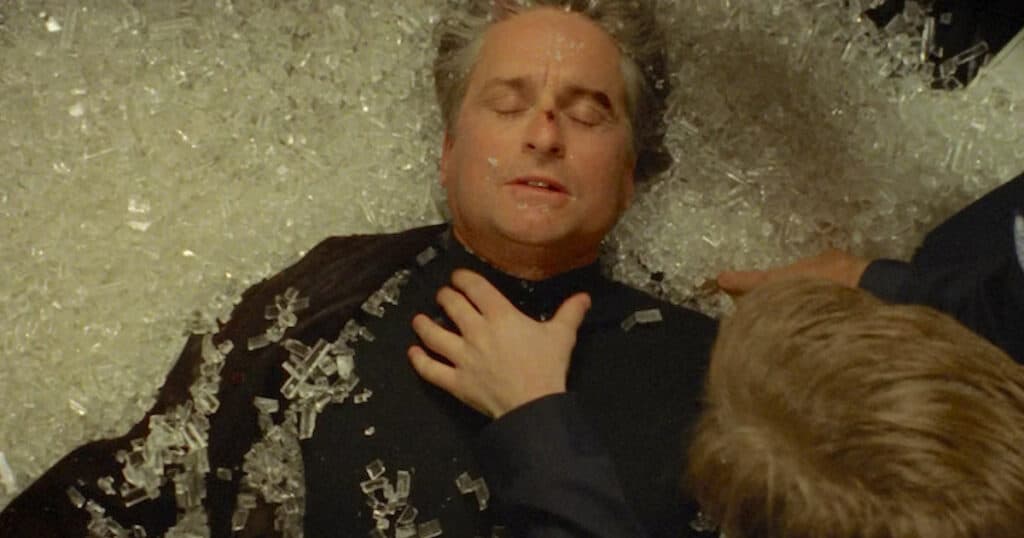
Principal photography on The Game officially began on August 13, 1996, and lasted until January 7, 1997. Although PolyGram insisted on filming in Los Angeles because it was more cost-effective, the five-month, 100-day film shoot took place primarily in San Francisco, California, and the surrounding Bay Area. Fincher originally considered filming in Chicago, Illinois, and Seattle, Washington, but Chicago did not have the kind of Victorian mansions Fincher sought for the project and Seattle was devoid of a financial district to hint at the kind of “old money, Wall Street Vibe” that San Francisco had. The steep hills of San Francisco were also emphasized visually by Fincher to underscore the class differences among the characters in the film. Most of The Game was shot at night and on weekends, with several pickups completed in Los Angeles as well. One of the most striking locations in the movie includes Nicholas’ gaudy mansion, which was filmed at Filoli Mansion in Woodside California, located roughly 25 miles south of San Francisco. Other famous San Francisco sites include Golden Gate Park and The Presidio of San Francisco.
To establish the noirish, nocturnal visual tableau of the movie, Fincher hired the late great cinematographer Harris Savides to light and lens the picture, a collaborator he was familiar with from his music video days in the early 90s. Savides was nicknamed Haggis, and whether it’s true or not, Fincher once told Empire Magazine that a can of haggis can be found in every single scene of the movie as an inside joke relating to his longtime DP. Regardless, Savides sought to achieve a “rich and supple” texture with the aesthetic of the movie and used The Godfather as an inspirational blueprint to film in stunning locations while retaining a portentous tone.
Meanwhile, Fincher used a chemical printing process known as Bleach Bypassing to give the Technicolor nighttime sequences a smoother appearance. For Fincher, the challenge was to keep audiences deceived while keeping them engaged through “45 minutes of red herrings.” To keep the audience’s undivided attention amid Nicholas’ Kafkaesque nightmare, Fincher opted to film scenes as straightforward as possible with one camera rather than confusing viewers with multiple cameras, which runs the risk of “boring people with coverage.” According to Fincher in the DVD audio commentary for the film:
“My tact on it was I wanted to present in as wide a frame and as unloaded a situation point-of-view as possible. As much as a kind of simple proscenium way, ‘this is what’s going on, this is what this guy sees, and to experience the movie through Michael Douglas. And you have to be cautious of doing too much cinematic engineering.”
One of the most intense scenes in the film comes when Nicholas’ taxi flies off a dock and plunges into the San Francisco Bay. The exterior shot of the taxi submerging underwater was filmed near the famous Embaradero waterfront in San Francisco. However, the interior of the taxi cab was filmed with Michael Douglas in a water tank on a soundstage at Sony Pictures Studio in Los Angeles. Douglas was fitted into a contraption dressed to resemble the interior of the taxi cab, with three cameras rolling simultaneously to capture the underwater footage. Thanks to the movie magic and power of editing, the harrowing sequence feels like one contiguous take, despite being filmed piecemeal on location and in a studio backlot.
As for the scene in which Nicholas suddenly awakes in a Mexican tomb, the scene was genuinely shot in Mexicali, Baja, California in Norte Mexico. Sam Peckinpah fans may notice how Nicholas adorns the same dusty suit worn by Warren Oats in the badass 1974 movie Bring Me the Head of Alfredo Garcia. Far from a coincidence, the entire sequence was meant as an affectionate homage to the twisted Peckinpah classic.
Speaking of classic twists, the ending of The Game has long courted controversy, with many feeling that Conrad’s grand charade is a total copout at best and an insulting slap in the face at worst. The notion that everything Nicholas endured was one big practical birthday joke orchestrated by his brother left many viewers upset and feeling cheated with an unsatisfying sense of closure that essentially rendered all of the events before completely meaningless. It’s also worth noting that an alternate ending was filmed for The Game, which takes place following Conrad’s revelation that Nicholas’s entire misadventure has been one giant calculated ruse.
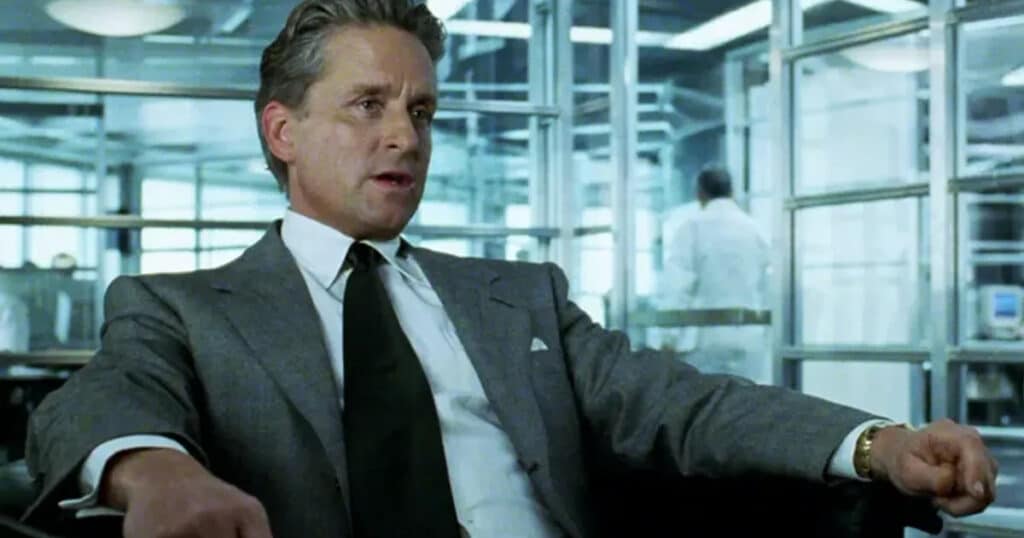
In the alternate ending, instead of having one awkward final encounter with Christine, Nicholas exits the hotel alone at night and wanders toward the sidewalk. When asked if he’d like a taxi, Nicholas devilishly glints at the camera and says, “No, I don’t think so. Thank you,” and ambles down the sidewalk by himself. While this feels like a more germane conclusion than the one featured in the theatrical release, Michael Douglas still feels strongly about the movie in retrospect. When promoting Ant-Man in 2015, Douglas told Collider:
“I think what I’m most proud about is that it’s one of the very few movies that you could not guess the ending. That’s why I’m such a big sports fan, with sports you can never guess what’s gonna happen. Most movies you get halfway through and you can kind of guess the ending. The Game you could never figure out what the ending was gonna be. David Fincher is a very talented filmmaker. It was an extremely tough shoot, it was very long, a lot of nights. I thought it was a really well-made picture, very unpredictable and I do hear that picture when I talk about movies that I’ve made that people liked a lot.”
Unfortunately, Fincher isn’t as proud of the picture as Douglas seems to be, often lamenting his inability to construct a tighter third act and more gratifying finale. Fincher credits his wife and longtime producing partner Cean Chaffin for urging him not to make The Game and blames himself for stubbornly ignoring her concerns at the time.
According to Fincher via Playboy, Chaffin: “Was extremely vociferous, for instance, when she said, ‘Don’t make The Game’ and in hindsight, my wife was right. We didn’t figure out the third act, and it was my fault because I thought if you could just keep your foot on the throttle it would be liberating and funny. I know what I like, and one thing I definitely like is not knowing where a movie is going. These days, though, it’s hard to get audiences to give themselves over. They want to see the whole movie in a 90-second trailer.”
What Fincher thought would be liberating and funny turned out to be a joke too dark and twisted for many viewers to appreciate at the time. Although the film drew mostly positive reviews from critics and earned $109.4 million worldwide against a $70 million budget, The Game was viewed as a minor disappointment compared to the box office success of Fincher’s Se7en. However, the movie has become a beloved cult classic over the past 25 years and is now often regarded as one of Fincher’s most underrated features. Ironically, the very aspects of the film that may have alienated audiences in 1997 have been reappraised as a progenitor of post-modern cinema. Fincher perfectly articulates the post-modern phenomenon and how it applies to The Game, telling The Independent:
“Movies usually make a pact with the audience that says: we’re going to play it straight. What we show you is going to add up. But we don’t do that. In that respect, it’s about movies and how movies dole out information.”
Indeed, by putting viewers into Nicholas’ shoes and viewing the action through his perspective, the movie implicates the audience as the protagonist and the entire experience becomes less about the final destination than the winding journey. The plot is less about where Nicholas ends up and more about how the movie plots function, manipulate, trick, tease, and misguide moviegoers with images and exposition. This distinction may not have been appreciated widely in 1997, but with viewers becoming more sophisticated over the past 25 years, The Game remains more important than ever nowadays. Fincher may not feel that way personally, but in terms of how the film has been received retroactively, The Game has fittingly become much more lasting and durable than a puzzling cinematic toy.






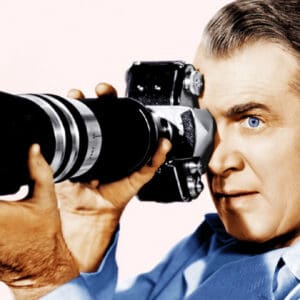
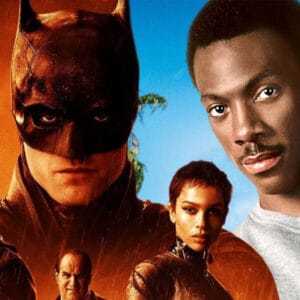
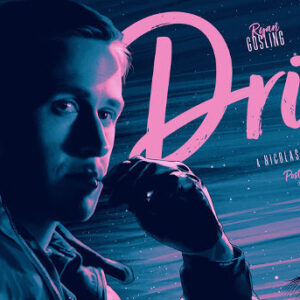

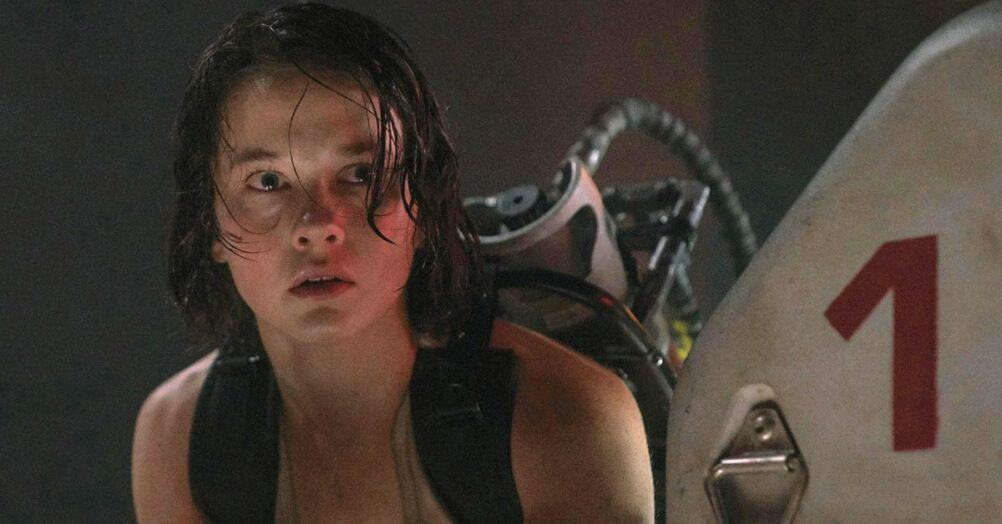


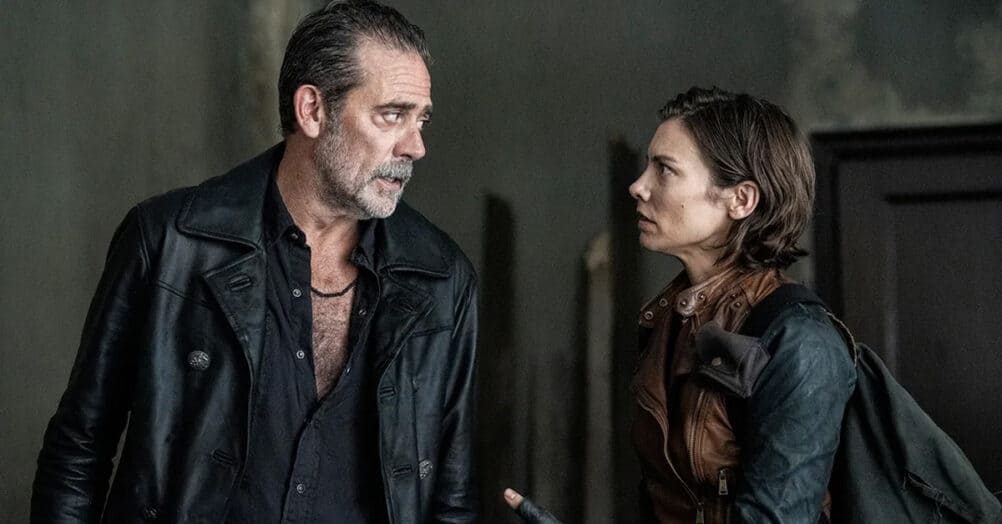
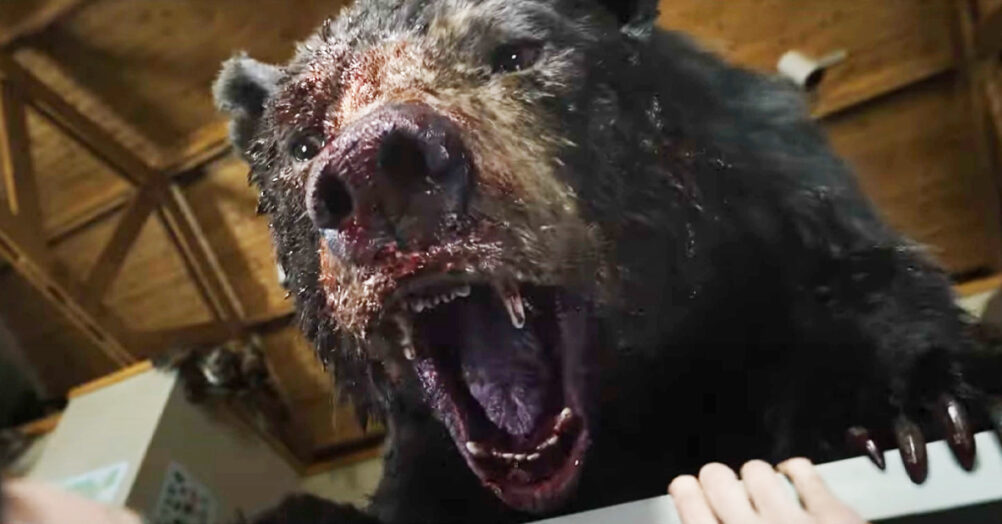


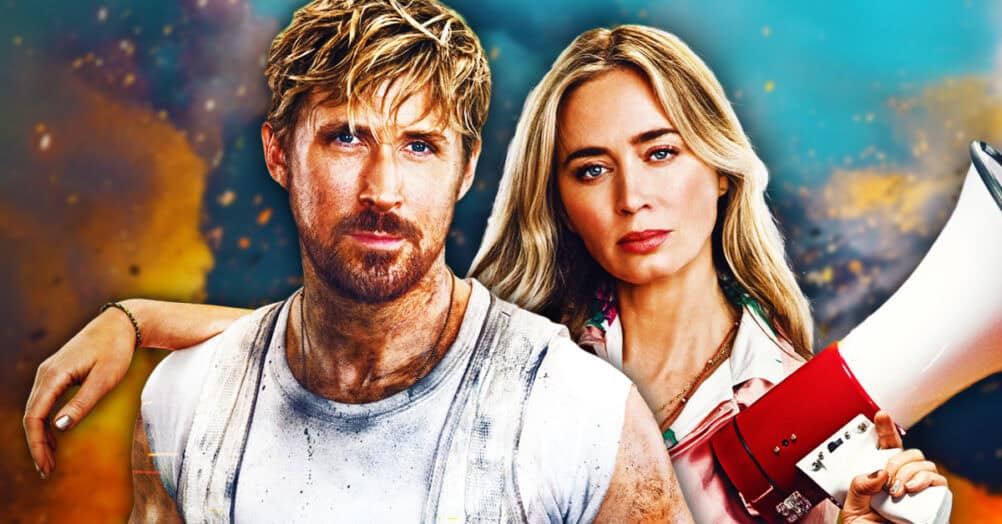

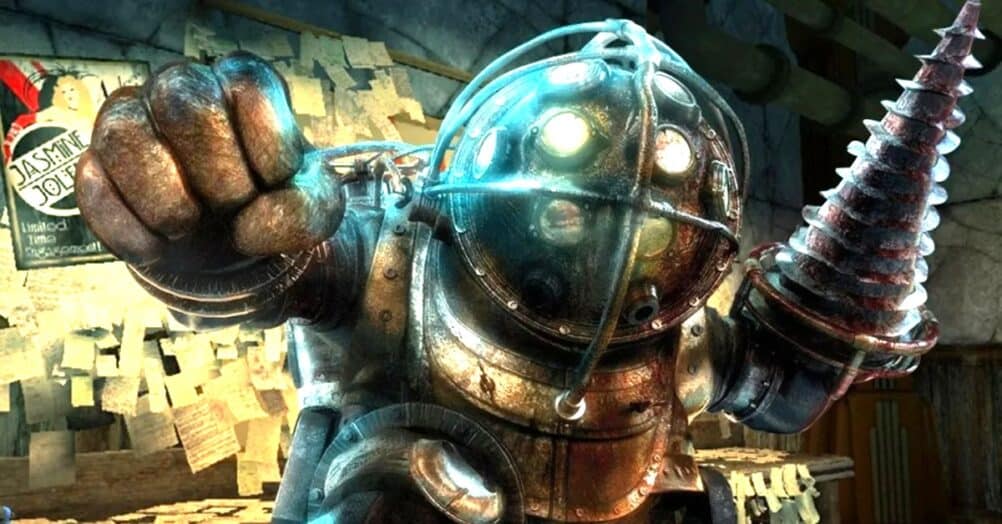
Follow the JOBLO MOVIE NETWORK
Follow us on YOUTUBE
Follow ARROW IN THE HEAD
Follow AITH on YOUTUBE